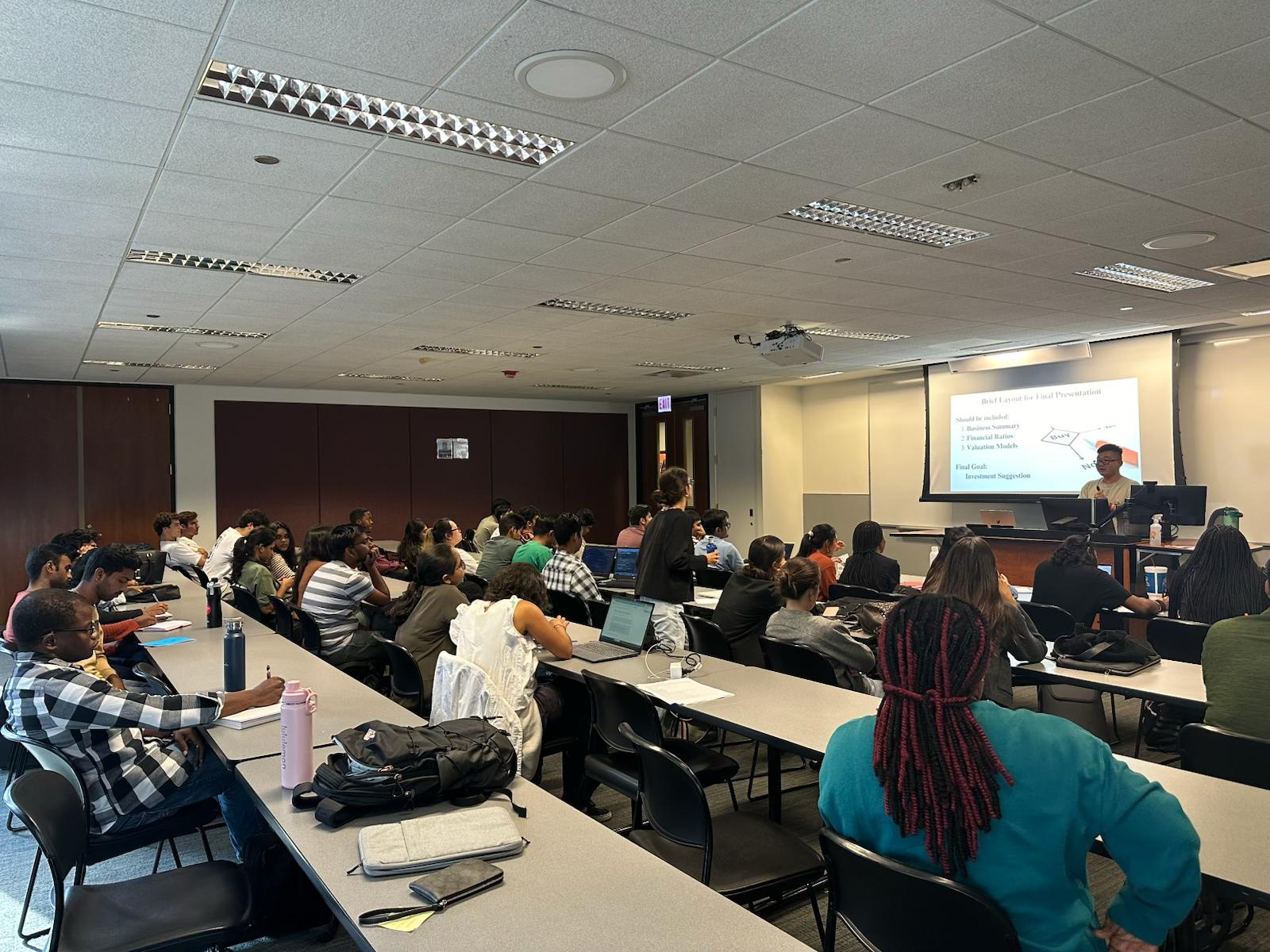Recently, I had the opportunity to interview my dear friend Divya Appilli Govindaraju, a graduate student in the Master of Finance program at Stuart School of Business and the Risk Manager at Stuart Investments. Govindaraju talks about her experience at Stuart Investments, an investment club at Stuart School of Business. The club started with a $250,000 investment and currently stands at $1.6 million in assets under management. What’s fascinating is that this club has been independently running without any funding from the Stuart School of Business or Illinois Tech!
Say “Hi” to the team at Stuart Investments (SI)
Inquiring about the Stuart Investments team, I asked Govindaraju about the club’s operations. She started by highlighting Professor Michael Rybak, Clinical Associate Professor of Finance at Stuart, who is the faculty advisor and is an integral member in directing the club and its decisions. Since I took a class with Professor Rybak last semester, I appreciated knowing more about the club. The leadership team also currently includes the Executive Director and the Fund Manager, led by Akansha and Kevin, both students in the Master of Finance program.
What happens at SI?
Like most of you all, my first question was straightforward: What exactly happens at Stuart Investment meetings? Govindaraju explained that the club’s principal goal is to help students learn how to invest, and expose them to the idea behind smart investments rather than just telling them which stock to invest in. They carry out in-depth stock research and create methods to determine whether a stock is overvalued or undervalued in the market.
A typical SI meeting
I then asked Govindaraju to tell me more about the meetings at Stuart Investments. She mentioned that groups are made after the first few meetups, and detailed presentations are conducted which helps students to build absolute and relative quantitative models. These sessions cover basic financial concepts like a company’s ratios, understanding their profitability, and portfolio analysis. As the semester progresses, these sessions become more complex, focusing on financial statements, possibilities of bankruptcy, and trend analytics to estimate a company’s past and future performance.
Stock pitches and final outcomes
I then wanted to learn about the company stocks that Stuart Investments had analyzed. Govindaraju shared that recently Tesla and Broadcom had made a strong impact and Eli Lilly, a popular pharma company, was the most recent stock that was included in SI’s financial portfolio.
Additionally, according to Govindaraju, close to 50 students attended meetings on a regular basis last semester, which created an exciting atmosphere for her to mentor new members. Groups analyze models throughout the meetings and at the end of each semester report back to the club with their findings. Professor Rybak makes the ultimate choice to buy/sell stocks after discussing with the leadership team. If the stock pitch is great, it has the potential to be included in the SI portfolio! Govindaraju said that since most participants this semester are experienced finance professionals, and the discussions are more informative, she has a fun new challenge ahead of her!
Parting thoughts
For me, writing this article was out of the box because it allowed me to learn and apply this knowledge. I find the dynamics of financial markets fascinating and unpredictable, and I do believe it’s important to have a basic understanding of investing. This is a numbers game, and if you’re one looking to play, don’t miss out on Stuart Investments!
For more information: https://www.iit.edu/stuart/student-resources/skill-development-and-mentoring/stuart-investments

